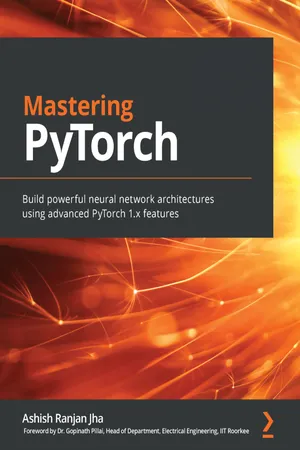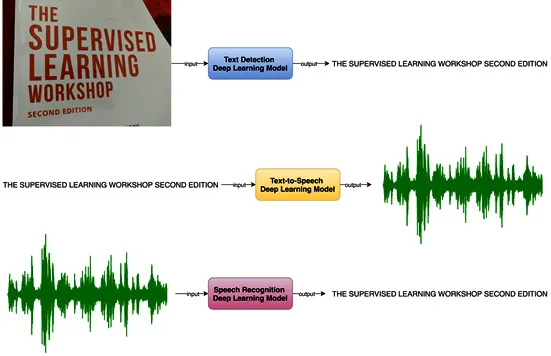
Mastering PyTorch
Ashish Ranjan Jha
- 450 páginas
- English
- ePUB (apto para móviles)
- Disponible en iOS y Android
Mastering PyTorch
Ashish Ranjan Jha
Información del libro
Master advanced techniques and algorithms for deep learning with PyTorch using real-world examples
Key Features
- Understand how to use PyTorch 1.x to build advanced neural network models
- Learn to perform a wide range of tasks by implementing deep learning algorithms and techniques
- Gain expertise in domains such as computer vision, NLP, Deep RL, Explainable AI, and much more
Book Description
Deep learning is driving the AI revolution, and PyTorch is making it easier than ever before for anyone to build deep learning applications. This PyTorch book will help you uncover expert techniques to get the most out of your data and build complex neural network models.The book starts with a quick overview of PyTorch and explores using convolutional neural network (CNN) architectures for image classification. You'll then work with recurrent neural network (RNN) architectures and transformers for sentiment analysis. As you advance, you'll apply deep learning across different domains, such as music, text, and image generation using generative models and explore the world of generative adversarial networks (GANs). You'll not only build and train your own deep reinforcement learning models in PyTorch but also deploy PyTorch models to production using expert tips and techniques. Finally, you'll get to grips with training large models efficiently in a distributed manner, searching neural architectures effectively with AutoML, and rapidly prototyping models using PyTorch and fast.ai.By the end of this PyTorch book, you'll be able to perform complex deep learning tasks using PyTorch to build smart artificial intelligence models.
What you will learn
- Implement text and music generating models using PyTorch
- Build a deep Q-network (DQN) model in PyTorch
- Export universal PyTorch models using Open Neural Network Exchange (ONNX)
- Become well-versed with rapid prototyping using PyTorch with fast.ai
- Perform neural architecture search effectively using AutoML
- Easily interpret machine learning (ML) models written in PyTorch using Captum
- Design ResNets, LSTMs, Transformers, and more using PyTorch
- Find out how to use PyTorch for distributed training using the torch.distributed API
Who this book is for
This book is for data scientists, machine learning researchers, and deep learning practitioners looking to implement advanced deep learning paradigms using PyTorch 1.x. Working knowledge of deep learning with Python programming is required.
]]>
Preguntas frecuentes
Información
Section 1: PyTorch Overview
- Chapter 1, Overview of Deep Learning Using PyTorch
- Chapter 2, Combining CNNs and LSTMs
Chapter 1: Overview of Deep Learning using PyTorch
- Input: An image of a text; output: Text
- Input: Text; output: A natural voice speaking the text
- Input: A natural voice speaking the text; output: Transcribed text

- A refresher on deep learning
- Exploring the PyTorch library
- Training a neural network using PyTorch